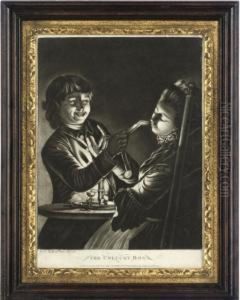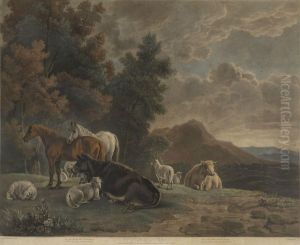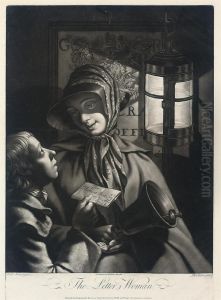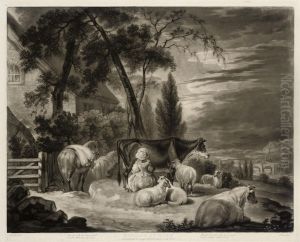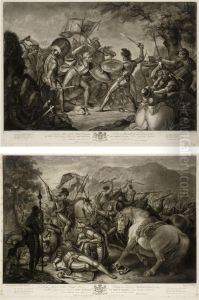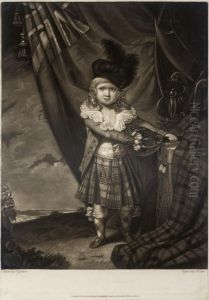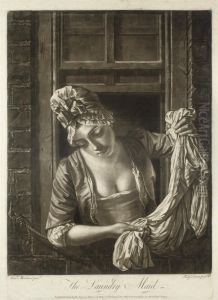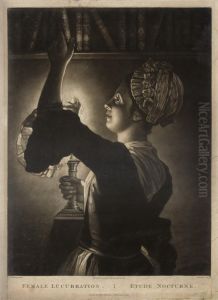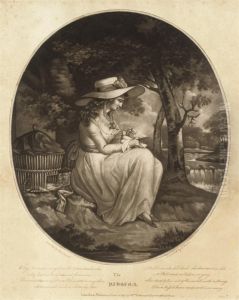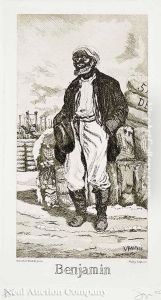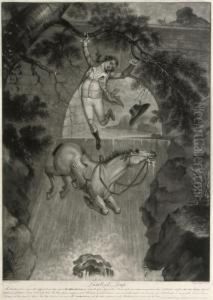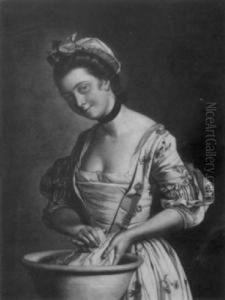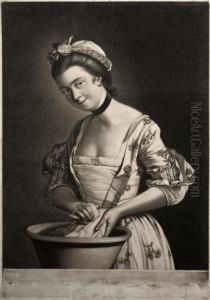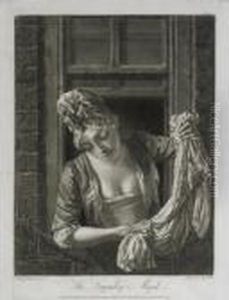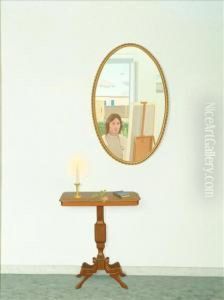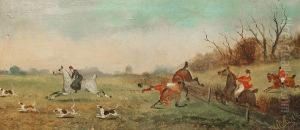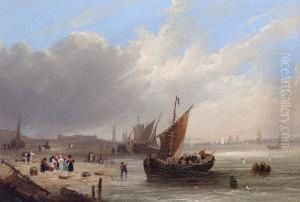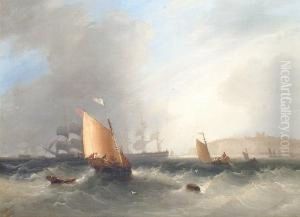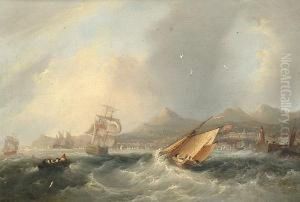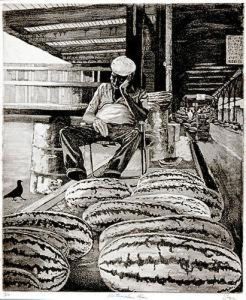Philip Dawe Paintings
Philip Dawe was an English artist who worked during the 18th century, primarily known for his work as a mezzotint engraver and printmaker. While the exact dates of his birth and death are not definitively known, he is believed to have been born around 1745 and to have died around 1830.
Dawe's early life and training are not well-documented, but it is known that he was active in London where he developed his skills in the art of mezzotint, a printmaking process that allowed for the creation of images with a wide range of tonal variation. This technique was particularly suited to reproducing the effects of oil paintings, making it a popular method for producing prints after well-known works of art.
Throughout his career, Dawe produced a significant body of work that included portraits, satirical prints, and illustrations of contemporary events. One of his notable works is the series of satirical prints known as 'The Macaroni Prints,' which depicted fashionable young men of the time in an exaggerated and humorous manner. These prints were part of a larger trend of social commentary and satire in the arts during the 18th century.
Dawe also worked with prominent artists of his time, including painting copies of works by Joshua Reynolds, one of the leading portrait painters in England. His engravings after Reynolds' paintings helped to disseminate the artist's work to a broader audience.
Philip Dawe's contributions to printmaking were part of the vibrant art scene in London during the 18th century, and his prints provide valuable insights into the social and cultural milieu of his time. Despite the lack of extensive personal records, Dawe's surviving works continue to be studied and appreciated for their artistic quality and historical significance.
